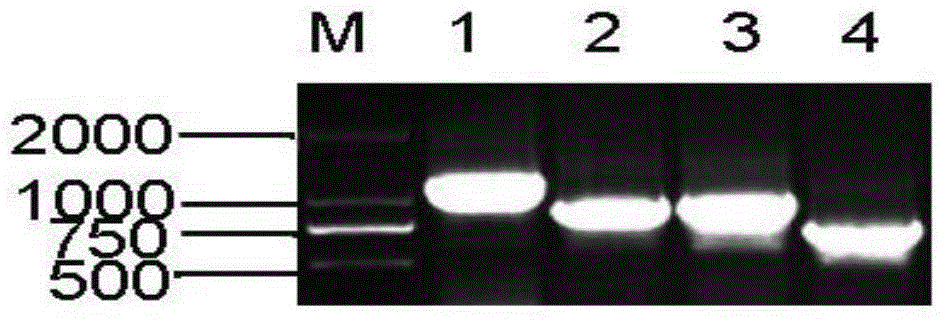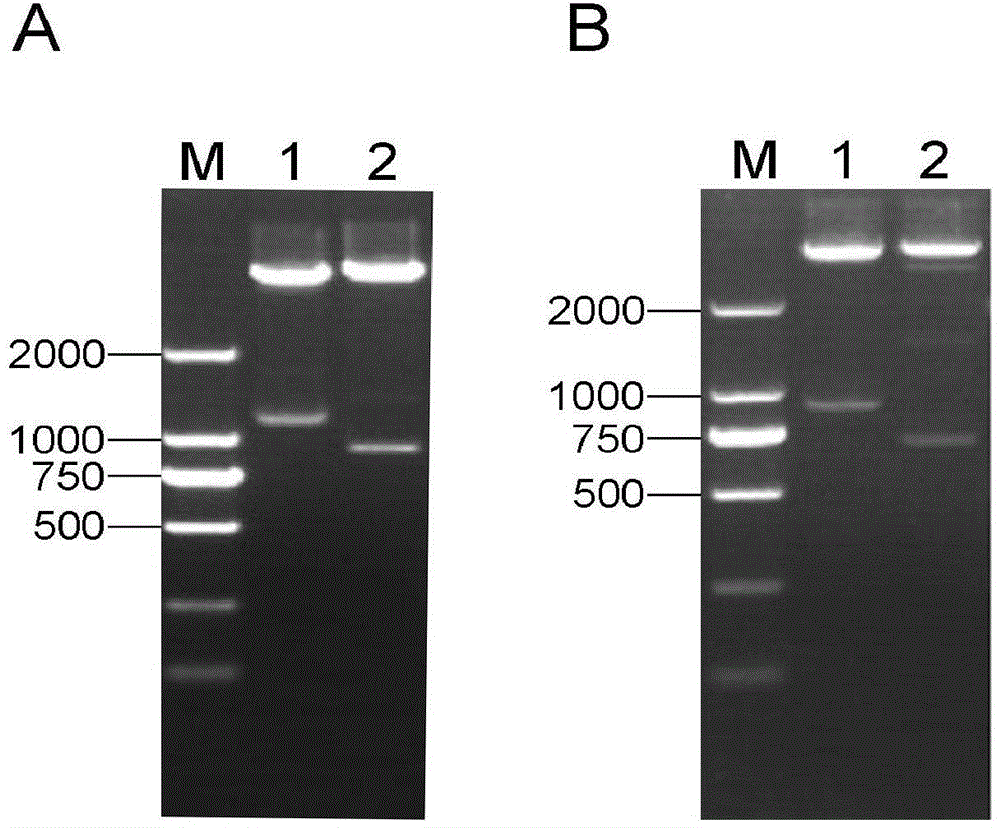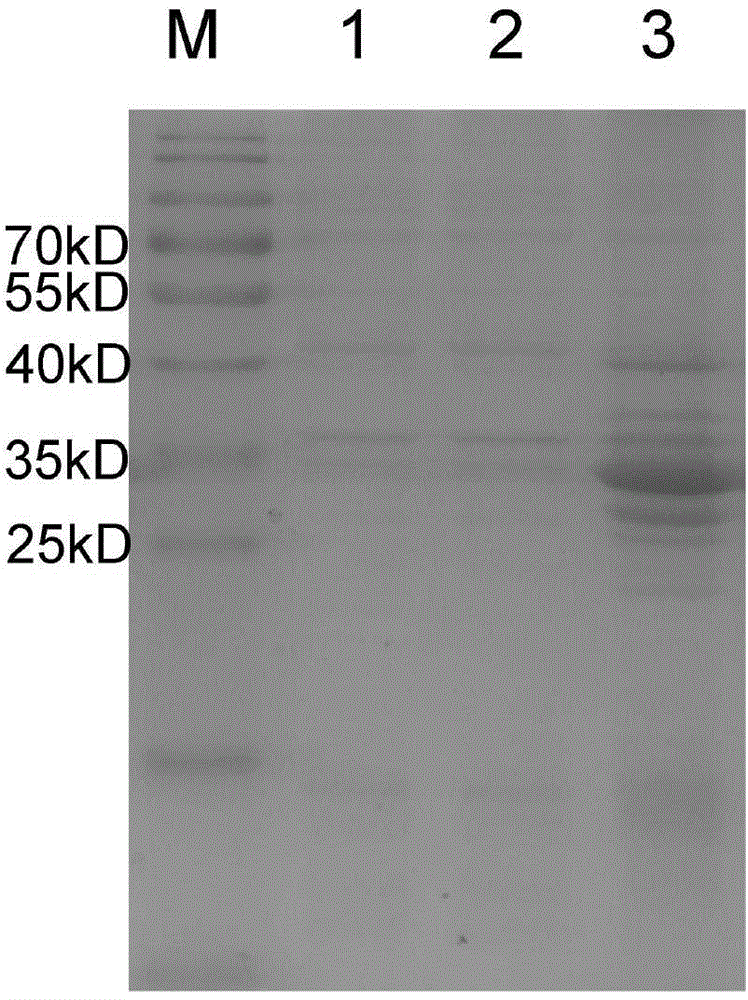Clostridium perfringens alpha, beta 1, beta 2 and epsilon coexpression vector and construction method and expression method thereof
A Clostridium perfringens and co-expression carrier technology, applied in the field of bioengineering, can solve the problems of insufficient expression and inability to produce immune protection in immunized animals, so as to achieve good immunogenicity, facilitate large-scale production, and control quality Effect
- Summary
- Abstract
- Description
- Claims
- Application Information
AI Technical Summary
Problems solved by technology
Method used
Image
Examples
Embodiment 1
[0043] Example 1: Clostridium perfringens α, β 1 , Β 2 Construction and expression of co-expression vector of ε and ε toxin
[0044] 1.α, ε, β 1 , Β 2 Amplification of toxin coding genes
[0045] Inoculate the purchased standard strains of C. perfringens C59-1 and C60-2 into freshly prepared anaerobic liver soup medium and cultivate overnight. 600 When it reaches 0.6-0.8, the anaerobic liver soup culture solution is collected aseptically, and the genomic DNA of C59-1 and C60-2 is extracted with the bacterial genome extraction kit as a PCR template to amplify each toxin gene.
[0046] PCR reaction system: 50μL MasterMix, 2μL upstream and downstream primers, 16μL template, 30μL deionized water; DNA gel recovery kit to recover four toxin coding genes;
[0047] 2.pETDuet-1-α and pRSFDuet-1-β 2 Vector construction
[0048] The two vectors pETDuet-1 and pRSFDuet-1 were digested with EcoRI and PstI. 40μL digestion system: 4μL of 10×H buffer, 1μL of EcoRI and PstI, 24μL of carrier, 8μL of deion...
Embodiment 2
[0055] Example 2: α, ε, β 1 , Β 2 Co-expression result detection of four toxins
[0056] 1 Preparation of SDS-PAGE solution:
[0057] Tris-glycine buffer: 25mmol / L Tris, 250mmol / L glycine (pH8.0), 0.1% SDS.
[0058] 2×SDS loading buffer: 100mmol / L Tris.C1 (pH8.0), 200m mol / L mercaptoethanol, 4% SDS, 0.2% bromophenol blue, 20% glycerol.
[0059] Coomassie Brilliant Blue Staining Solution: Dissolve 0.25g of Coomassie Brilliant Blue R250 in 45ml methanol, 45ml water and 10ml glacial acetic acid.
[0060] Decolorizing solution: 30% methanol, 10% glacial acetic acid, distilled water to make up the volume to 100ml.
[0061] 2 SDS-PAGE experiment
[0062] (1) Wash the glass plate, fix it on the electrophoresis tank, and seal the edge with 2.0% agarose. Prepare 5ml of 15% separation glue according to the formula of molecular cloning, and quickly inject it between two glass plates, with the top of the glue covering 1ml of double distilled water. After the separation gel has solidified, pour out ...
PUM
 Login to View More
Login to View More Abstract
Description
Claims
Application Information
 Login to View More
Login to View More - R&D
- Intellectual Property
- Life Sciences
- Materials
- Tech Scout
- Unparalleled Data Quality
- Higher Quality Content
- 60% Fewer Hallucinations
Browse by: Latest US Patents, China's latest patents, Technical Efficacy Thesaurus, Application Domain, Technology Topic, Popular Technical Reports.
© 2025 PatSnap. All rights reserved.Legal|Privacy policy|Modern Slavery Act Transparency Statement|Sitemap|About US| Contact US: help@patsnap.com



